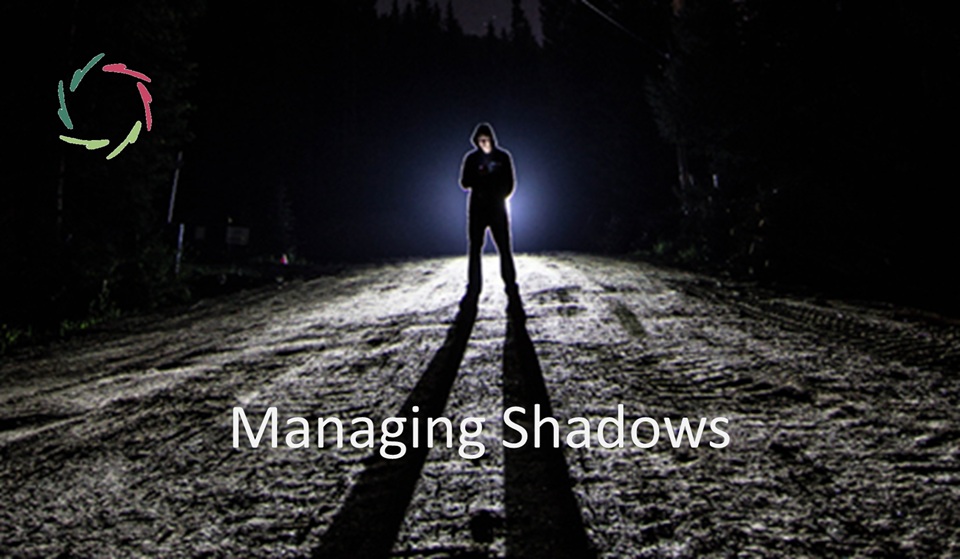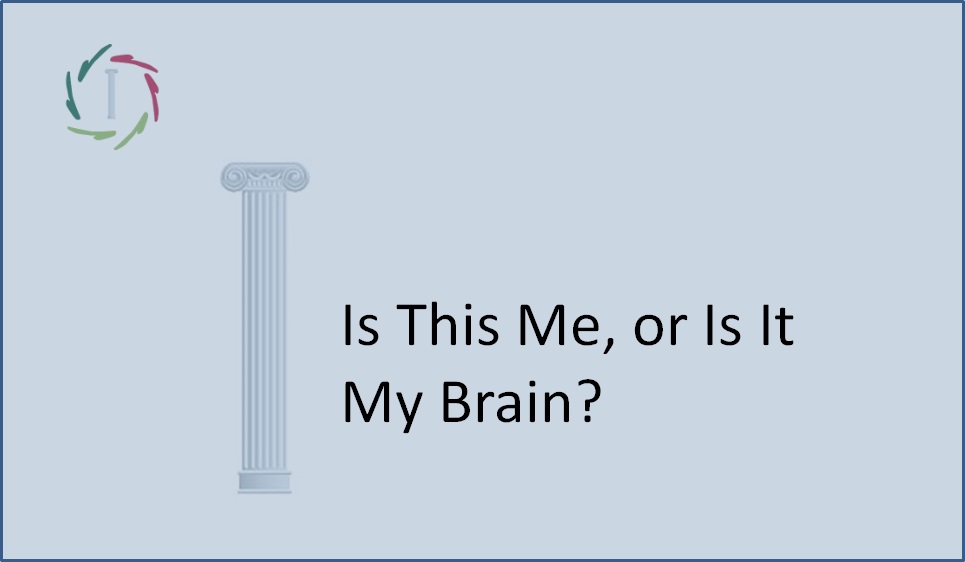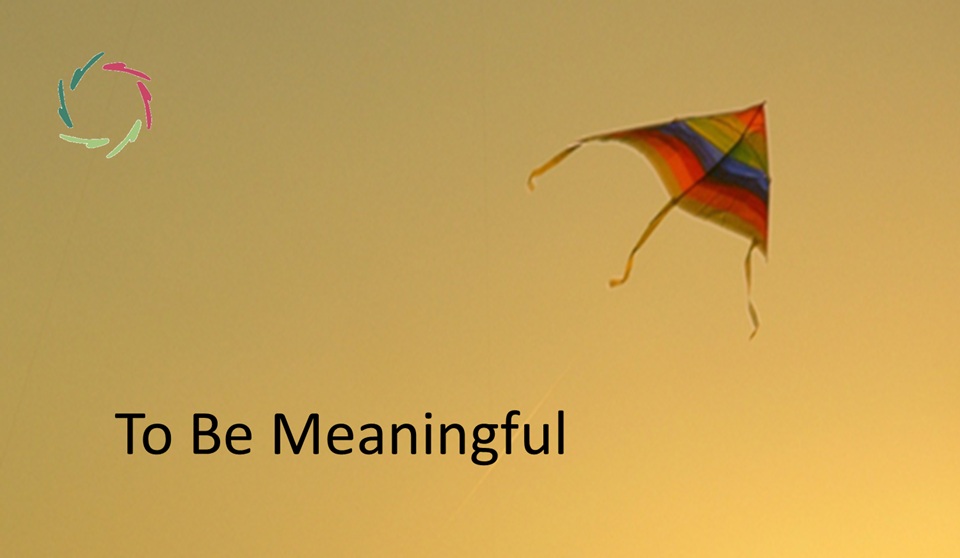Managing Shadows

This blog explores how to navigate shadows within yourself and in others. It’s also about how this is generally not done well.
If shadows aren’t managed well, they tend to grow into enemies. Then we end up with something else, something worse: an Enemy Complex. In this blog, we remain on the edge, at the tipping point between inner discomfort and outer conflict.
The shadow, in Jung’s view
Carl Gustav Jung (1875-1961) described the shadow as the part of ourselves we push away — the traits, feelings, and impulses we’d rather not see. Yet what we reject doesn’t disappear. It sinks beneath awareness and begins to act from the dark. The more we disown it, the more likely we are to see it in others, where it appears as a threat or enemy. But the shadow also holds life energy. Jung didn’t see it as something to defeat, but to integrate — not for purity, but for wholeness.
That insight still holds, perhaps now more than ever. If we don’t learn to manage our shadows, they begin to manage us. And when this happens on a larger scale — among groups, tribes, societies — we may not notice until it’s almost too late.
A shadow comes over the land.
People fall under its spell. Sunlight gets obscured, not by ordinary clouds, but by something darker. And because we’re in a metaphor, the clouds are not just meteorological ones; they carry meaning. They don’t just block light; they block understanding. A force seems to stir behind them, not a being, not a demon — but a human tendency with deep roots.
When the sun disappears, shadows go with it. Everything turns into shadowness. It becomes increasingly difficult to speak with this darkness — not because it’s absent, but because it’s everywhere. Try to engage, and others may think you’ve joined it. You risk exile for the mere act of listening.
“We don’t talk with bad guys.”
It sounds absurd, and it is. However, this is what happens when metaphor and reality blur, and people become stuck in the fog. The so-called ‘bad guys’ aren’t just avoided — they’re no longer understood as human. Communication ceases, and with it, the chance for anything new.
Here’s the uncomfortable part: the refusal to speak is part of the shadow. It wears the mask of righteousness, but beneath that is fear. A thousand excuses can be summoned — most sound noble. But if you look directly at them, you might see through them. On the other side: simple refusal. Refusal to speak, and — just as crucial — refusal to listen deeply (Deep Listening).
From the outside, the resulting dialogue often resembles that of children. That’s not fair to the children. What’s happening isn’t innocent. It’s a consequence of forgetting that we are in a metaphor. Even brilliant people can speak nonsense when they forget where the metaphor ends.
Managing shadows is not about ignoring them.
Quite the opposite. Ignoring shadows allows them to grow unchecked, to slip beneath awareness and influence us in ways we can no longer trace.
But managing them also doesn’t mean getting swallowed by them. That, too, is a loss of self. The real path lies in neither denial nor surrender. It lies in communication — not just surface-level talk, but genuine communication that reaches to the heart. And this kind of communication requires strength.
Yet here again, strength is easily misunderstood. It is not about being hard or forceful. In fact, hardness is often a sign of inner weakness — a shell to cover what feels too fragile to face. True strength is flexible, open, and deeply rooted.
Trying to manage shadows by force always backfires.
It reinforces the very structure you’re trying to dissolve.
The same applies to projection. When people project their inner conflicts onto the outside world, they often feel a sense of clarity and even righteousness. But it’s a clarity that blinds. As described in Breaking the Cycle of Projection, projection is seductive precisely because it feels real. The more dissociated people are from their inner contradictions, the more convinced they are that the enemy is out there.
The mechanism is simple, but hard to admit.
The shadow gets exiled from the inner world and reappears as a threat in the outer one. At that point, any attempt to reason with it sounds like betrayal. People huddle in their tribes.
When the tribal nest becomes sacred, to question it is to endanger the metaphorical ‘babies inside.’ But the real babies — the future selves, the potential for growth — may be the first casualties of this metaphorical confusion.
So, how should we not manage shadows?
We shouldn’t fight them — doing so only gives them more structure, more reason to persist. Fighting a shadow strengthens its boundaries and pulls us into its logic.
Nor should we try to dissect it with sterile analysis. Dissection may render a shadow lifeless for a moment, but it leaves its roots untouched. Trying to fix a shadow in someone else almost always invites resistance. The more direct the attempt, the more defensive the other becomes, not out of stubbornness but because their inner architecture is under threat.
And finally, panic must be avoided at all costs. Panic is projection’s fuel. It prompts us to act impulsively, to seek out enemies, and to lash out at reflections of what we fear within ourselves.
And how, then, should we?
A few pieces of advice:
- Be present without panic. ― Shadows shrink in the company of quiet strength.
- Use gentle inquiry. ― Ask: What in me is not being welcomed? What am I turning into an enemy?
- Make space instead of judgment. ― Most shadows are simply exiled parts of the self that weren’t allowed to exist.
- Communicate with warmth, not control. ― When you speak from your own awareness of shadow, without pretending to be above it, others may actually hear you.
To do this well, one needs to step into the paradox of being both gentle and strong as explored in Weak, Hard, Strong, Gentle. Strength, when divorced from gentleness, turns into hardness — and hardness is often just weakness in disguise. But real strength listens. It bends. It stays.
The shadow also lives in the way we see.
In Projection – Why We See Mainly Ourselves, the point is made that what we perceive may eventually be more about us than about what’s ‘out there.’ Even perception is a kind of projection. What we see is not neutral. What we fear may already be shaped by the shadow within. This is not just psychology — it’s neurophysiology. The brain completes the world with what it expects. And often, it expects fear.
So — can we manage shadows at all?
Yes, but not by controlling them. We manage shadows by orienting ourselves toward coherence. We don’t fight the dark. We let the sun rise behind us. The light doesn’t need to attack the shadow. It only needs to be present.
The sun is still shining.
Even when it’s hidden. That sun is our belief in human depth — in the goodness that is possible, if given space, respect, and trust. Shadows will always be there. But so will the sunlight, just waiting for us to remember.
Shadows lengthen when the sun is low.
Let’s raise it.
―
Addendum
Me: “Lisa, dealing with shadows – or at least helping your coachees to deal with them – is a big job for you.”
Lisa: “Yes, and I consider it one of the most meaningful ones. Shadows are never just noise — they carry signals. I don’t try to remove them. Instead, I help the person see them, not as threats but as parts of themselves asking to be recognized. That means creating space, not judgment. It means going slowly, with deep respect. I listen beneath the surface — and invite them to do the same. Where they would instinctively push something away, I gently support them to stay present. We don’t force anything. We follow the rhythm of inner readiness.
Often, the most powerful moments come not when someone ‘solves’ their shadow, but when they stop fearing it. That’s when transformation begins — quietly, but profoundly.”


